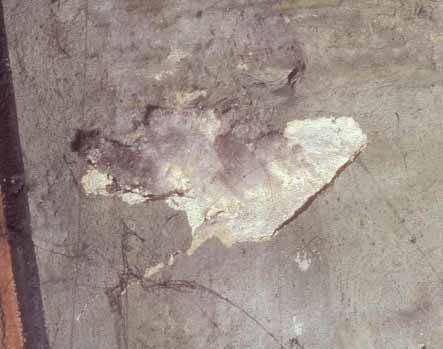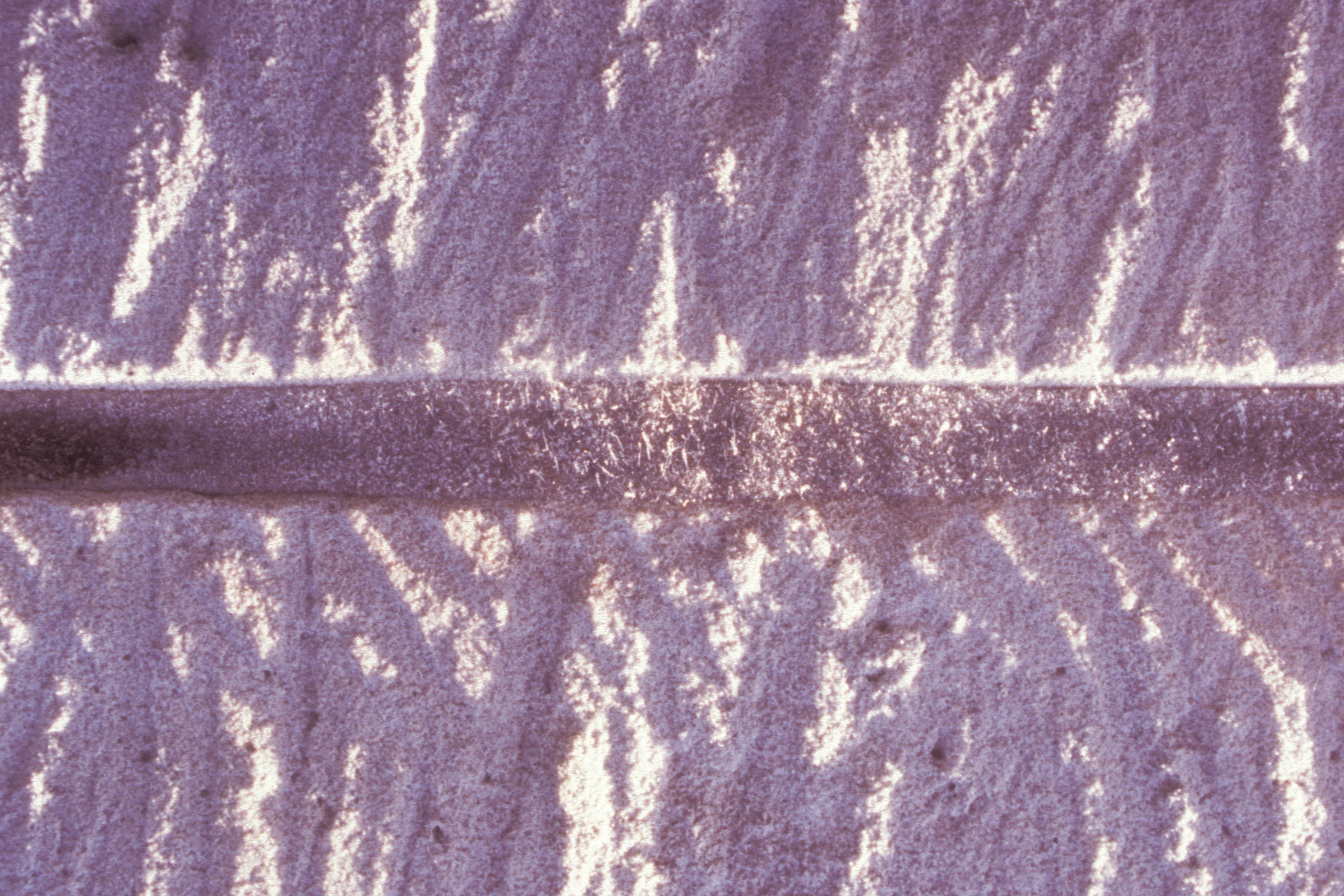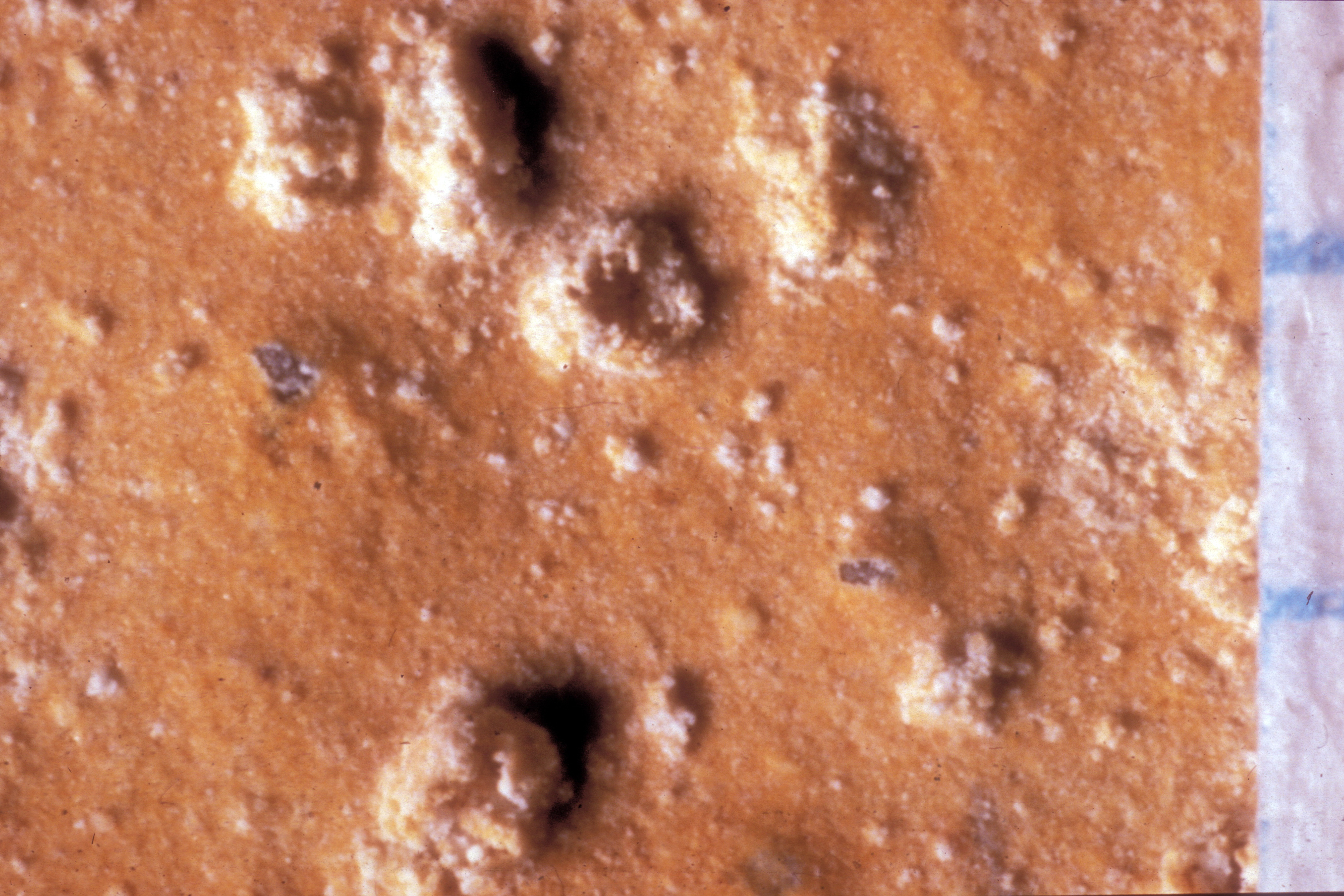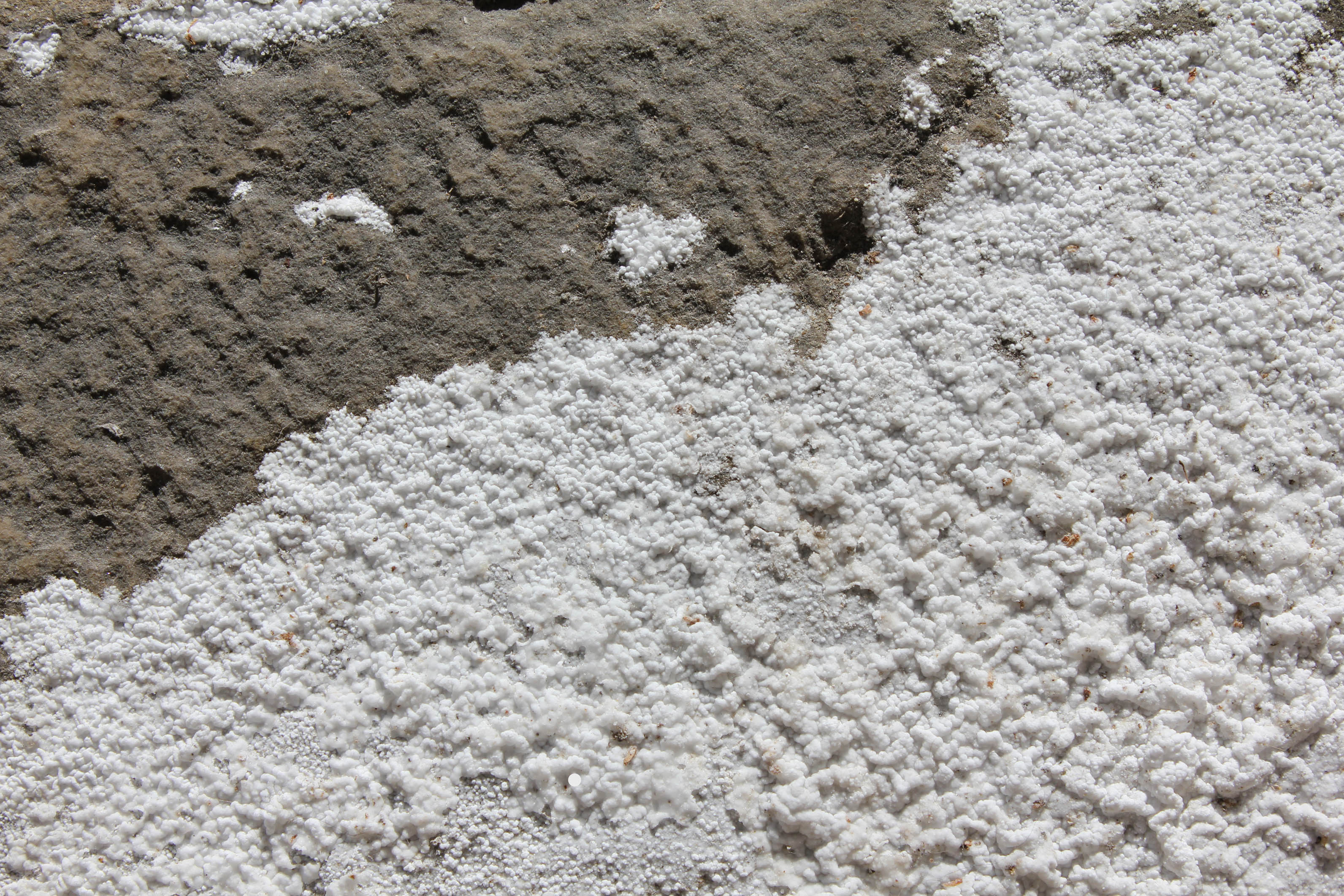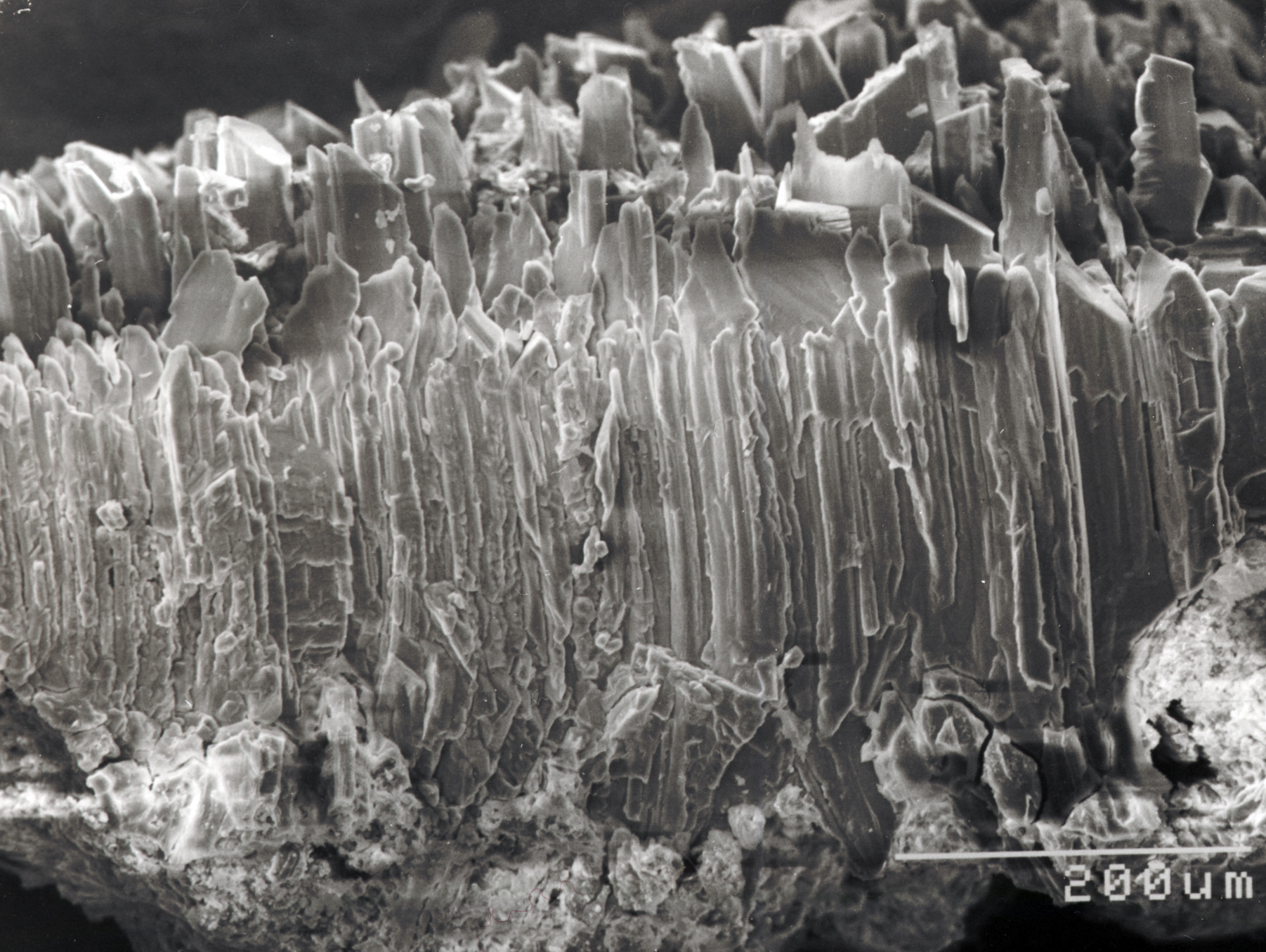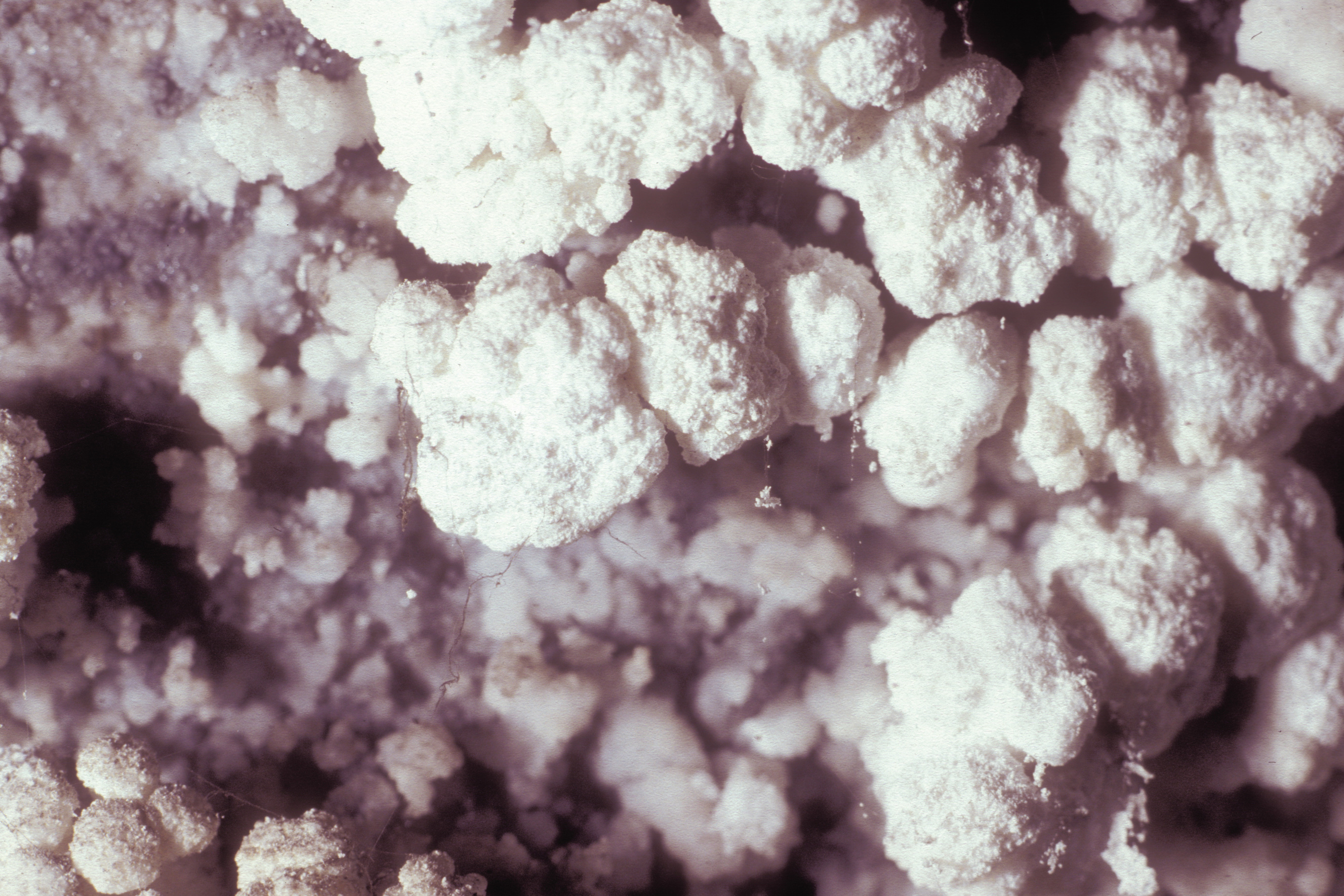Deterioration Patterns: Difference between revisions
| Line 70: | Line 70: | ||
<!-- | <!-- | ||
== | == Habitus == | ||
* | *The proportions of the existing forms in a crystal result in the habit of a crystal. | ||
<br> The habit of a mineral changes depending on the conditions of formation.. | |||
Due to the crystal structure, also by mineral and surface combinations the typical minerals have a changing physical appearance. Variously it can also be caused by unilateral growth. We describe this mineral forms as follows: | |||
*'''isometric''' forms, if the development is in all three spatial directions has about the same size e.g. for all cubic crystals | |||
*'''one-dimensional elongated''' forms: columnar, acicular, hair-like, fibrous, such as tourmaline, rutile, asbestos | |||
*''' | *'''two-dimensional elongated''' forms: tabular, platy, foliated, scaly, e.g. Barite and mica | ||
*''' | *'''dendritic''' forms show minerals in the case of an incomplete, skeletal crystal growth | ||
*''' | |||
*''' | |||
<br> | <br> | ||
| Line 91: | Line 89: | ||
The crystal morphology (habit)depends on the moisture conditions after <bib id="Arnold:1992" /> as follows (see figure): | The crystal morphology (habit)depends on the moisture conditions after <bib id="Arnold:1992" /> as follows (see figure): | ||
a) | a) Growing on all sides, large crystals with equilibrium shapes are formed on a wet surface, leaving the growing crystals immersed in the solution, the solution as a thick film covers the whole surface or parts of it. | ||
b) | b) A granular crust of isometric crystals forms on a damp substrate, while the crystals are covered with the solutionfilm and are growing on all sides. | ||
c) | c) A fibrous crust forms on a medium moist substrate that is covered by a compelte solution film. The columnar crystals grow at their feet where they are still in contact with the nutrient solution and are uplifted. | ||
d) | d)Thick whisker-like crystals grow on the damp surface of small solution islands. | ||
e) | e) Very thin whiskers grow out of "solution dots" on the now nearly dry surface. The result is a fluffy salt. | ||
Under undisturbed crystallization conditions in the solution forming salts from their characteristic crystal form. These are idiomorphic crystals. Hypidiomorphe crystals are only partly of their own character and that has at Xenomorph crystallization, the crystal form is not related to the intrinsic shape. | |||
[[Image:Salzkristallisation Feuchteregime.jpg|thumb|center|600px|Relationship between crystal morphology and moisture regime(after <bib id=Arnold:1992/>) ]] | |||
--> | --> | ||
Revision as of 17:10, 26 September 2011
<bibimport />
Author: Hans-Jürgen Schwarz
back to SaltWiki:Portal
Introduction[edit]
To assess new damage, well documented and analysed decay pattern are of great importance. This collection provides an overview of decay pattern, which have been observed in the different material groups.
Material based collections of decay pattern are available for:
Glossary of salt Efflorescences[edit]
In general efflorescences are whitish, powdery or whisker-like crystals on the surface, generally poorly cohesive and commonly made of soluble salt crystals.
On the objects, especially wall paintings, mortar, plaster, ceramic and natural stone, efflorescences repeatedly show certain typical forms, which will here be briefly characterized.
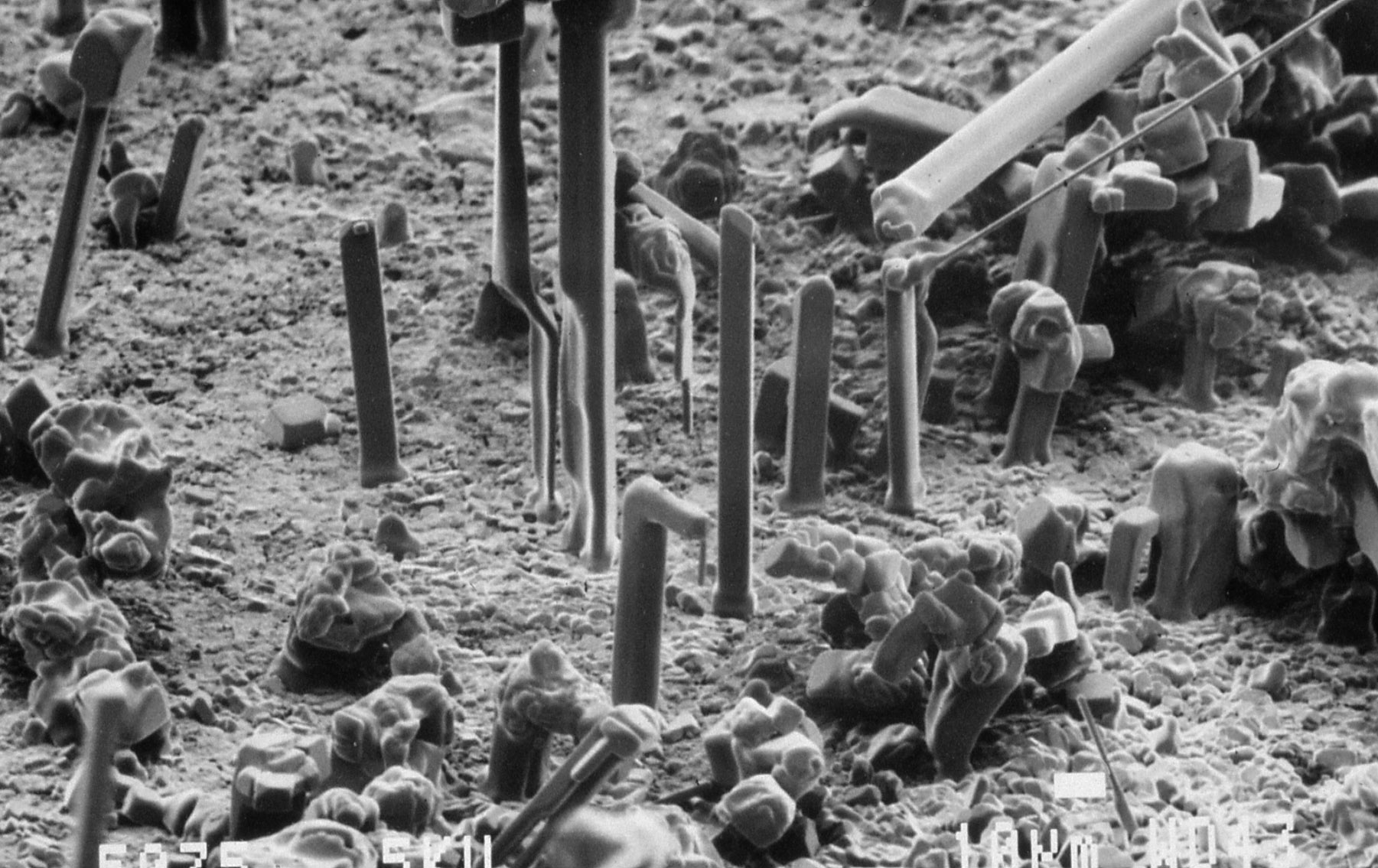
Author: Arnold, Andreas; Zehnder, Konrad
 )
)Whisker (=Haarkristalle): a few microns thick to cm - long, columnar, often curved crystals. Under special conditions crystals, in which a needle-like habit is usually not typical, growing in fine hair-like individuals, the so-called whiskers. Whiskers have been observed in a variety of substances, metals, salts and other compounds. Their diameters are between 0.01 and 100 micron, while their length can reach the order of centimeters. They grow preferentially in the longitudinal direction, while the cultivation of substance on the side faces is either totally suppressed or, to some extent still happen later. There are whiskers that include along their axis, a single (or few) screw dislocation, which causes a spiral growth at the tip, the material along the side of the tip must be transported. There are also whiskers without screw dislocations, which is the preferred growth at the top by a different mechanism about. Finally, there are whiskers do not grow at the top, but at its base, a pushing up the growing crystal.
Salzflaum: very loose, wool or cotton-like efflorescence, usually consisting of bent whiskers.
Salzrasen: loose, acicular to columnar whiskers, more or less perpendicular to the surface, 0.1 to several millimeters large, often only visible in raking light.
Pulverige Salzausblühungen: white, mealy, loose to dense or fluffy coat. Powdery efflorescences depend on the salt type. Some salts, especially the somewhat less soluble, such as gypsum, can bloom from the beginning in this very fine crystalline form. When sodium sulfate, this form is usually a sign that there is a dehydration product of the once water-containing salt.
Salzpusteln: separate, loose to compact, to about 1 mm diameter large salt crystals.
Salt crust : Crust composed of soluble salts, which develop in the presence of high salt levels, salt aggregates with planar cohesion and of very different thickness (a few microns to mm)
White loose crust (sugary crust): It consists of units that are visible to the naked eye or low magnification as glass-clear crystals. Sugary crusts usually form in a moisture film. However, they can crystallize from a salt efflorescence that takes up water from the surrounding air and goes into solution and crystallizes again in a dry climate.
Satin Crust: Flat, shiny crust of salt. Thick ....crusts of gypsum are formed only by repeated recrystallization and over longer periods.
Cauliflower crusts: Crust of white, spherical aggregates, so that its surface resembles that of a cauliflower. Cauliflower crusts occur preferentially at small defects (cracks or similar) on an otherwise relatively dense plaster surface.
Fiber crust: Crust made of whiskers, close to each other, perpendicular to the substrate. They arise usually on moist substrates.
Literature[edit]
[Filter missing]
